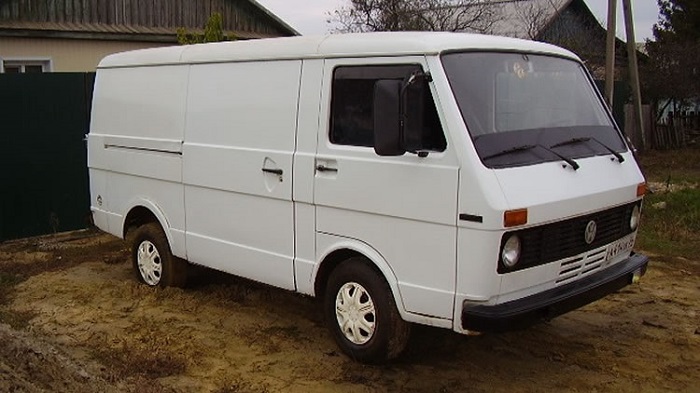The Volkswagen LT series, produced between 1975 and 1991, remains a beloved choice for enthusiasts and practical users alike. Known for their reliability and versatility, the LT 28, 31, 35, 40, and 45 models have become iconic in the world of commercial vehicles. Whether you’re a proud owner of one of these classic vans or considering a restoration project, understanding the nuances of maintenance and repair is essential for keeping your vehicle in top shape. In this article, we’ll explore key aspects of servicing these models, common issues, and tips for ensuring longevity.
Understanding the Volkswagen LT Series
The Volkswagen LT series was designed as a heavy-duty commercial vehicle, featuring a robust build and a range of configurations suitable for various uses, from cargo transport to camper conversions. With a diverse engine lineup that includes both petrol and diesel options, the LT series offers flexibility in performance and fuel efficiency.
Despite their sturdy design, as with any vehicle of this age, regular maintenance and repairs are crucial. Owners should be aware of common issues that can arise and how to address them effectively.
Routine Maintenance
- Oil Changes: Regular oil changes are vital for the longevity of any engine. For the LT series, it’s recommended to change the oil every 5,000 to 7,500 kilometers, depending on usage. Always use the manufacturer-recommended oil type and quality to ensure optimal performance.
- Cooling System: The cooling system is critical in preventing overheating, especially in older vehicles. Check the coolant level regularly and inspect for leaks or corrosion in hoses and the radiator. Flushing the cooling system every two years can help maintain efficiency.
- Brakes: The braking system should be inspected frequently. Look for signs of wear on brake pads and discs, and ensure that brake fluid is at the appropriate level. Consider replacing brake fluid every two years to prevent moisture accumulation, which can lead to corrosion.
- Tires: Regularly check tire pressure and tread depth. The LT series can be fitted with various tire sizes depending on the configuration, so always refer to the owner’s manual for specifications. Rotate tires every 10,000 kilometers to promote even wear.
- Electrical System: Inspect the battery and electrical connections for corrosion. Given the age of these vehicles, wiring issues can occur, so keep an eye out for frayed wires or faulty connections. Regularly clean battery terminals to ensure a good connection.
Common Repairs
- Fuel System: Issues with the fuel system can lead to poor performance. Symptoms may include difficulty starting or decreased power. Regularly replace the fuel filter and check for leaks in fuel lines. Cleaning the fuel injectors can also help maintain engine performance.
- Suspension and Steering: Over time, suspension components can wear out, affecting ride quality and handling. Inspect shock absorbers, springs, and bushings for signs of wear. Steering components should also be checked for play and responsiveness.
- Transmission: The LT series is equipped with either manual or automatic transmissions. Regularly check transmission fluid levels and quality. If you notice slipping or rough shifting, it may be time for a fluid change or, in some cases, a full transmission service.
- Bodywork and Rust: Given their age, rust can be a significant concern for LT models. Regularly inspect the body, especially around wheel arches, doors, and the undercarriage. Treat any rust spots immediately to prevent further deterioration.
Restoration Tips
If you’re considering restoring a Volkswagen LT, here are some tips to keep in mind:
- Find Quality Parts: While some parts may be available from Volkswagen, many are now sourced from aftermarket suppliers or specialty shops. Research reputable suppliers to ensure you’re getting quality components.
- Join a Community: Engaging with fellow enthusiasts can provide valuable insights and support. Online forums and local clubs often share tips on restoration projects and sourcing hard-to-find parts.
- Document Your Work: Keeping a detailed log of repairs and maintenance not only helps track the vehicle’s history but also can enhance its value should you decide to sell it in the future.
- Consider Upgrades: While keeping the vehicle true to its original form is essential for some owners, others may want to consider upgrades for improved performance and comfort. Modernizing certain components, such as the suspension or braking system, can enhance drivability without sacrificing the vehicle’s character.
Conclusion
Maintaining and repairing a Volkswagen LT 28/31/35/40/45 from 1975 to 1991 can be a rewarding experience, allowing you to connect with a piece of automotive history. With regular maintenance and a proactive approach to repairs, you can ensure that your LT remains reliable and enjoyable for years to come. Whether you use it for work, travel, or leisure, the LT series offers a unique blend of practicality and nostalgia that continues to resonate with enthusiasts around the world.











